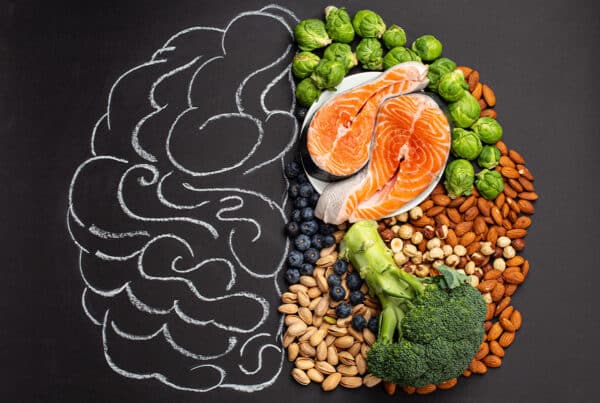What Medication-Assisted Treatment (MAT) Is & Why It Matters
Medication-assisted treatment (MAT) is one of the most powerful tools we have in the fight against addiction. When used appropriately, it helps reduce cravings, prevent relapse, and stabilize the brain long enough for real healing to begin.
But like any tool, it’s only effective when used the right way. And for many people—patients, families, even some providers—there’s still confusion about how MAT works, which medications are involved, and what the long-term plan looks like.
At Enterhealth, we don’t treat MAT as a cure or a shortcut. We use it when it makes clinical sense, always as part of a larger treatment plan rooted in therapy, neuroscience, and individualized care. Because when medication is used intentionally, the benefits far outweigh the risks.
Common Myths vs. Clinical Facts
Myth #1: MAT just replaces one drug with another
Fact: The goal of MAT isn’t to get someone “off drugs”—it’s to help them stabilize. Medications like buprenorphine (Suboxone) or naltrexone (Vivitrol) don’t create a high when taken as prescribed. Instead, they reduce cravings and withdrawal symptoms, giving the brain time to recalibrate.
These medications are closely regulated and prescribed under medical supervision, often with regular check-ins and dosage adjustments to ensure they’re supporting—not hindering—recovery.
Myth #2: If you’re on Suboxone or Vivitrol, you’re not really sober
Fact: Sobriety isn’t just about abstinence—it’s about function. MAT helps people get back to work, repair relationships, and live meaningful, productive lives. Being “off everything” might be the goal for some, but for many, MAT is a critical bridge to sustainable recovery.
These aren’t casual prescriptions—they’re part of a monitored treatment plan, overseen by trained professionals who ensure the medication is working as intended.
Myth #3: MAT is an easy way out
Fact: There’s nothing easy about recovery. MAT isn’t a magic bullet—it’s most effective when paired with therapy, structure, and support. In fact, research shows that outcomes are significantly better when MAT is part of a comprehensive treatment plan that includes behavioral health services. At Enterhealth, we use MAT as a clinical tool—not a shortcut.
How Medication-Assisted Treatment Actually Works
Addiction changes the brain—but MAT can help restore balance. Here’s how:
- Addiction disrupts the brain’s reward system.
Over time, drugs and alcohol rewire how the brain processes dopamine—damaging motivation, impulse control, and decision-making. - MAT interrupts the cycle of craving and relapse.
Medications like Suboxone and Vivitrol target specific receptors to reduce withdrawal symptoms, block the effects of substances, and give patients the clarity they need to engage in treatment. - These medications are closely monitored.
MAT at Enterhealth is always prescribed and managed by licensed professionals, with regular oversight to ensure the medication is safe, effective, and serving the patient’s larger recovery goals. - Stabilization creates space for healing.
When withdrawal and cravings are under control, patients can fully engage in therapy, rebuild routines, and begin long-term behavior change.

The Enterhealth Approach: MAT with Functional Psychotherapy
At Enterhealth, medication-assisted treatment isn’t automatic—it’s intentional. We don’t treat MAT as a one-size-fits-all solution. Instead, we use it when it supports a broader clinical strategy designed around each individual’s unique needs.
Here’s what sets our approach apart:

- MAT is used when clinically appropriate.
Each case is carefully evaluated to determine if—and when—medication is the right move. Learn more about when MAT is necessary > - Medication isn’t the treatment. It supports the treatment.
MAT helps stabilize brain chemistry, which makes patients more receptive to therapy, structure, and lasting behavior change. - We combine MAT with a functional psychotherapeutic model.
This means we look beyond symptoms to address the brain-based and behavioral patterns that fuel addiction.
- Every treatment plan is built around real clinical data.
We use tools like:- Neuropsychological testing
- Mental health assessments
- Functional psychotherapy
- Ongoing family involvement and education
- Care is personalized. Always.
We tailor every plan to the patient’s brain function, behavioral profile, and long-term goals—not a standard checklist.
The Future of Medication-Assisted Treatment
As science continues to evolve, so does the role of MAT in addiction recovery. New innovations are reshaping how we think about medication—not just as a short-term fix, but as part of a longer, smarter path to healing.
What’s ahead:
- Long-acting injectables are gaining ground.
Monthly or quarterly versions of medications reduce daily compliance challenges and lower the risk of misuse. - Treatment is becoming more personalized.
New tools allow for tailoring MAT to a person’s genetics, metabolism, mental health status, and clinical history. - AI and machine learning may enhance treatment planning.
Predictive tools could one day help providers adjust care in real time, anticipate relapse risk, and improve outcomes.
At Enterhealth, we stay current with innovation—but always through the lens of evidence, ethics, and whole-person care. The future of MAT isn’t just about more medication. It’s about smarter, more effective treatment rooted in neuroscience and individualized care.
Discover How Medication-Assisted Treatment at Enterhealth Can Help
Medication-assisted treatment isn’t about replacing one habit with another. It’s about creating the conditions for real change—using the best of modern medicine to support long-term recovery.
At Enterhealth, we believe MAT is most effective when it’s part of something bigger: a personalized, brain-based treatment plan that includes therapy, structure, and support for the whole person.
If you or someone you love is struggling with addiction, we’re here to help—with science, compassion, and care that goes beyond the basics.
Reach out today to learn how Enterhealth can help build a smarter path to recovery.




